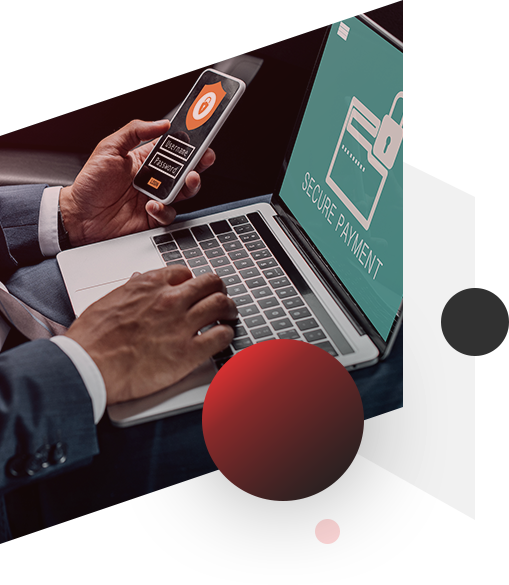Cyber Security Solutions for
Organizations with Critical Infrastructure
The best Cyber Security Home

Trusted by Over 50 Companies in the World
Why Choose Us
the leading cybersecurity technology providers based on their innovation, revenue, growth, user reviews, product features and benefits, analyst reports, and independent security tests.

Advanced Cyber Security Provider
Develop solutions that protect information, data and communications from unauthorized access, data corruption, and customer lifecycle disruption
Our consulting practice streamlines complex digital transformations to empower organizations with cyber resiliency. Our team of expert cloud security engineers collaborates seamlessly with our organizational change and IT project management consultants, ensuring efficient and effective deployments and implementations.
Global Projects
Clients Protect
Service Guarantee
Experts Team
Providing Best Cyber Security Solutions
T.R.V is an elite team of cyber special operators working shoulder to shoulder with critical sector technologists as they stand on the frontline of freedom.

What We Offer
Identifying vulnerabilities and protecting you from phishing.

Effective Training
One of the most critical components of any organization's cybersecurity strategy is password manag
Learn More
Phishing Techniques
In 2023, we’ve seen phishing attacks continue to be a formidable threat. With their constant evolu
Learn More
Security Awareness
Throughout my high school education, we had a recurring substitute teacher who seemed older than t
Learn More
Phishing
There's no denying the importance of equipping your organization and employees with the knowledge
Learn More
Security Culture
For those of you involved in the world of cybersecurity, you’re well aware that awareness and vigi
Learn More
Security Awareness
Security awareness training is the process of training your employees in good cybersecurity practi
Learn More
General Questions
What is Cybersecurity? Types, Threats and Cyber Safety Tips
Cybersecurity is the practice of defending computers, servers, mobile devices, electronic systems, networks, and data from malicious attacks. It’s also known as information technology security or electronic information security.
The term “cybersecurity” applies in a variety of contexts, from business to mobile computing, and can be divided into a few common categories.
- Network security is the practice of securing a computer network from intruders, whether targeted attackers or opportunistic malware.
- Application security focuses on keeping software and devices free of threats. A compromised application could provide access to the data its designed to protect. Successful security begins in the design stage, well before a program or device is deployed.
- Information security protects the integrity and privacy of data, both in storage and in transit.
- Operational security includes the processes and decisions for handling and protecting data assets. The permissions users have when accessing a network and the procedures that determine how and where data may be stored or shared all fall under this umbrella.
- Disaster recovery and business continuity define how an organization responds to a cyber-security incident or any other event that causes the loss of operations or data. Disaster recovery policies dictate how the organization restores its operations and information to return to the same operating capacity as before the event. Business continuity is the plan the organization falls back on while trying to operate without certain resources.
- End-user education addresses the most unpredictable cyber-security factor: people. Anyone can accidentally introduce a virus to an otherwise secure system by failing to follow good security practices. Teaching users to delete suspicious email attachments, not plug in unidentified USB drives, and various other important lessons is vital for the security of any organization.
How to Prevent Phishing Attacks
What are the best ways to avoid and mitigate phishing attacks? We asked a panel of experts how not to fall victim to this popular cyberattack.
Phishing attacks are one of the most common security challenges that both individuals and companies face in keeping their information secure. Whether it’s getting access to passwords, credit cards, or other sensitive information, hackers are using email, social media, phone calls, and any form of communication they can to steal valuable data. Businesses, of course, are a particularly worthwhile target.
How to Prevent Phishing Attacks
We asked this question to a panel of 33 infosec experts, and found these four commonalities among their responses:
- Conduct regular employee training: Train employees to recognize phishing attacks to avoid clicking on malicious links.
- Deploy a spam filter: Set up inbound spam filtering that can recognize and prevent emails from suspicious sources from reaching the inbox of employees.
- Keep passwords secure: Use a short phrase for a password (longer is better, and can be simpler) rather than just a few characters, and change it regularly. Deploy multi-factor authentication on critical business applications.
- Stay up-to-date with security patches and updates: You and your providers should install all the latest patches and updates to protect against vulnerabilities and security issues.
Common Types of Phishing Attacks Against Businesses
Company Impersonation
One of the most common forms of phishing is where attackers impersonate your brand. This is typically done with an email connected to a domain very similar to the target company (e.g., “first.name@amazon-support”). It’s also a difficult attack for companies to look out for due to the fact that you won’t know until someone falls for it or alerts you.
Spear phishing
Spear phishing is a type of scheme that involves using a fake company name (impersonation) but also key details about the target. Much like in sales, a rep finds the name, position and other personalization and includes that in a pitch email. Attackers find those same tokens and use it to compel more victims into their trap. It’s an especially dangerous ploy.
Email Account Takeover
All members of your executive and management team are vulnerable. If a phishing scammer acquires the email credentials of high-profile leadership, it’s likely they’ll target anyone they can using that very email address. Potential targets would be: colleagues, team members and even customers (if they’ve already obtained this information via hack).
Phishing Emails
Similar to the email account takeover scam, this phishing attack is done via email. The difference is the phishing scammer uses an email address that resembles a legitimate email address, person or company. The email will include a request to click a link, change a password, send a payment, respond with sensitive information, or open a file attachment.
Phone Phishing or Voice Phishing
Using Voice over Internet Protocol (VoIP) technology, scammers, again, impersonate companies. This technique also employs the other types of phishing including using personal details about targets and impersonating individuals of the company (e.g., the CEO) in order to get a higher take on the overall scam.
Phishing Attack Prevention Tips from the Experts
To help businesses better understand how they can work to avoid falling victim to phishing attacks, we asked a number of security experts to share their view of the most common ways that companies are subjected to phishing attacks and how businesses can prevent them. Below you’ll find responses to the question we posed:
Why is Cybersecurity Important for Everyone?
Cybersecurity is crucial because it safeguards personal information, financial data, and critical infrastructure. Everyone, from individuals to organizations, needs to prioritize cybersecurity to prevent cyber threats
How Do Cyber Attacks Commonly Occu
Cyber attacks can happen through phishing emails, malware, ransomware, or exploiting vulnerabilities in software. Understanding common attack vectors helps individuals and businesses stay vigilant
What Can Individuals Do to Enhance Their Cybersecurity?
Individuals can follow best practices such as keeping software updated, using strong passwords, avoiding public Wi-Fi, and being cautious while browsing online
How Can Businesses Protect Themselves from Cyber Threats?
Businesses should implement robust security measures, conduct regular risk assessments, train employees, and monitor network traffic for anomalies. Collaborating with cybersecurity experts is essential
Can Cybersecurity Tools Protect Against Identity Theft?
Yes, cybersecurity tools like antivirus software, firewalls, and encryption help prevent identity theft by securing sensitive information and detecting suspicious activities
Are Small Businesses at Risk of Cyber Attacks?
Absolutely. Small businesses are often targeted by cybercriminals due to their limited resources and less robust security. Implementing basic cybersecurity practices is crucial for their protection
What Are the Common Signs of a Cyber Attack?
Signs include unexpected pop-ups, slow system performance, unauthorized account access, and unusual network activity. Being aware of these indicators helps individuals respond promptly




